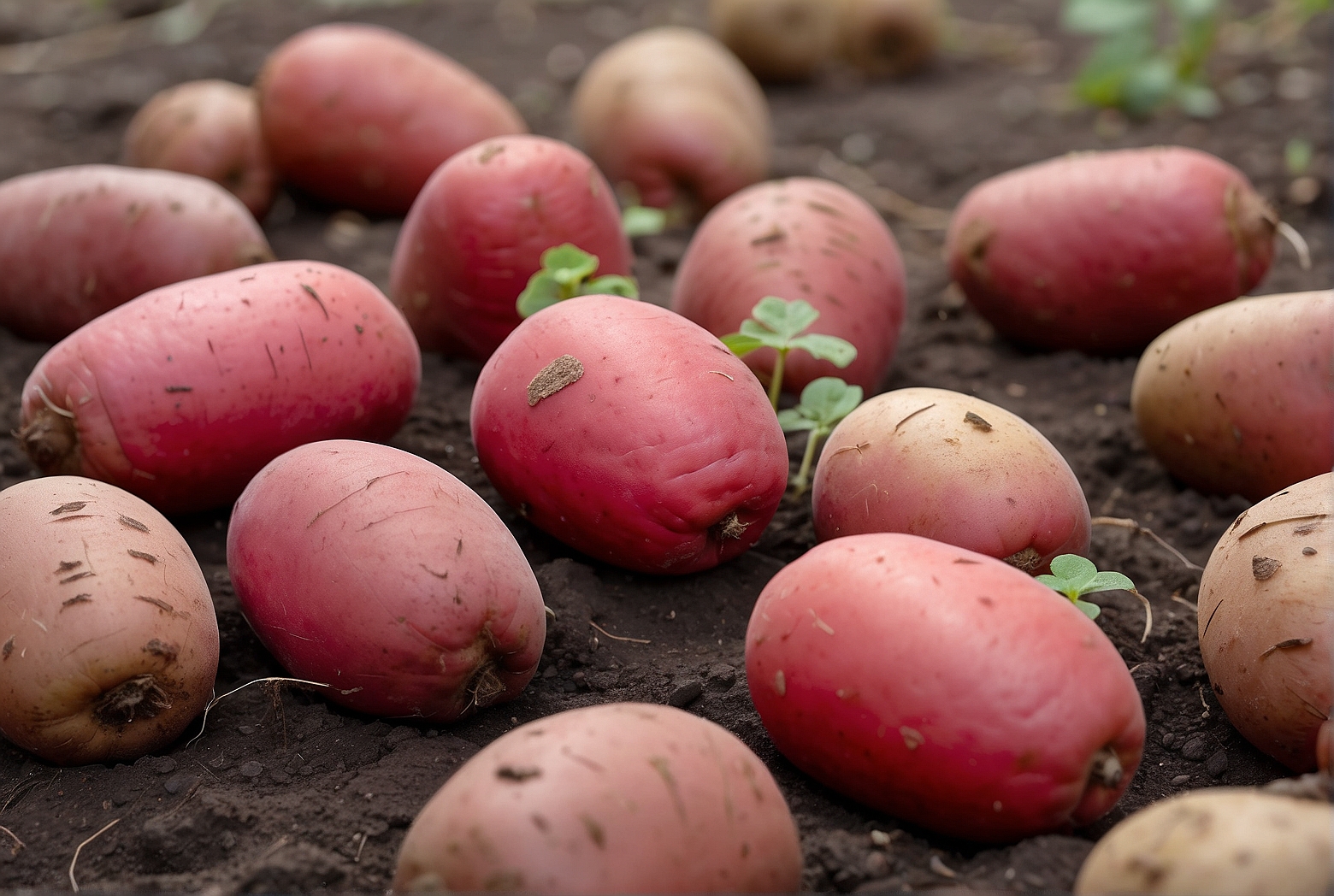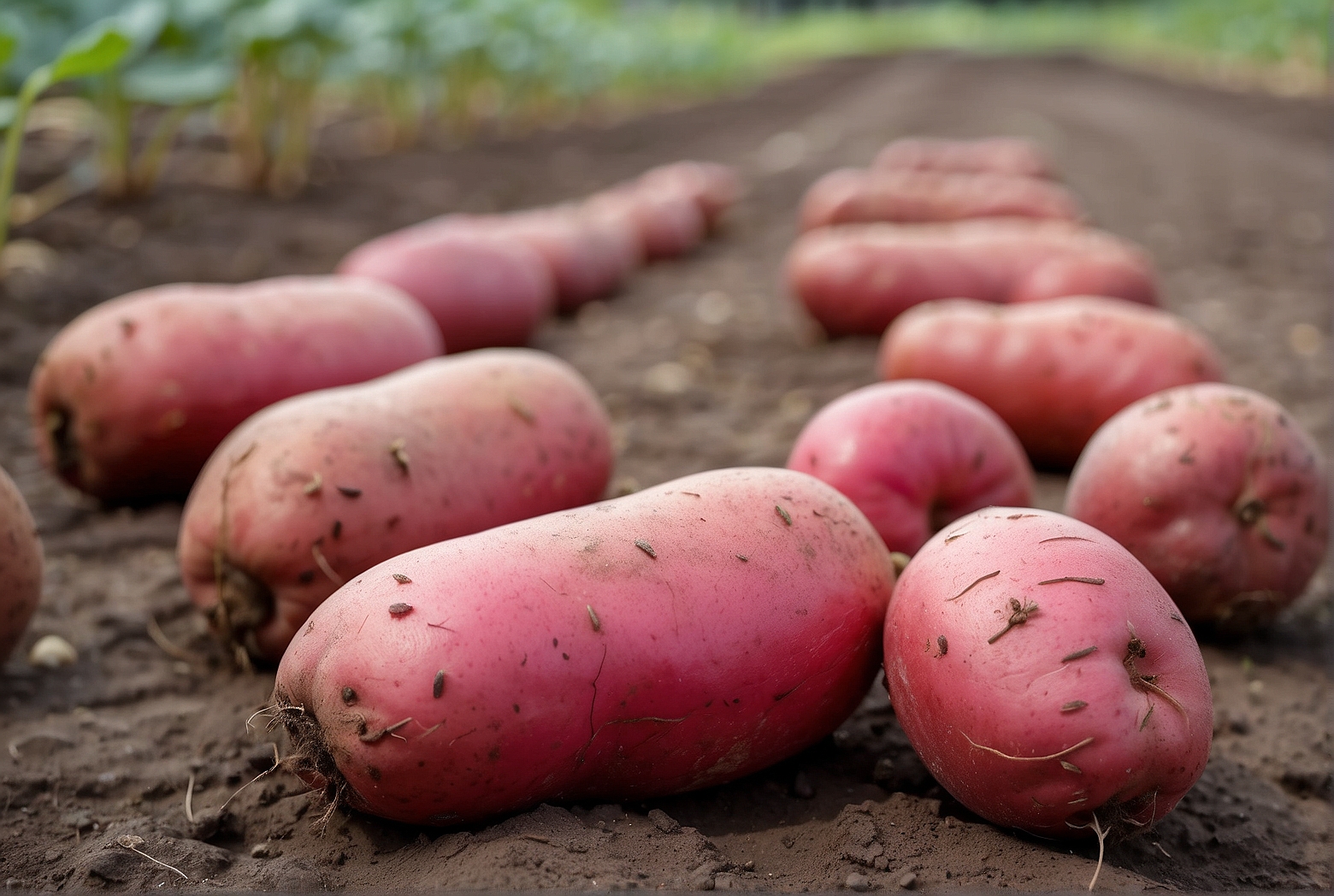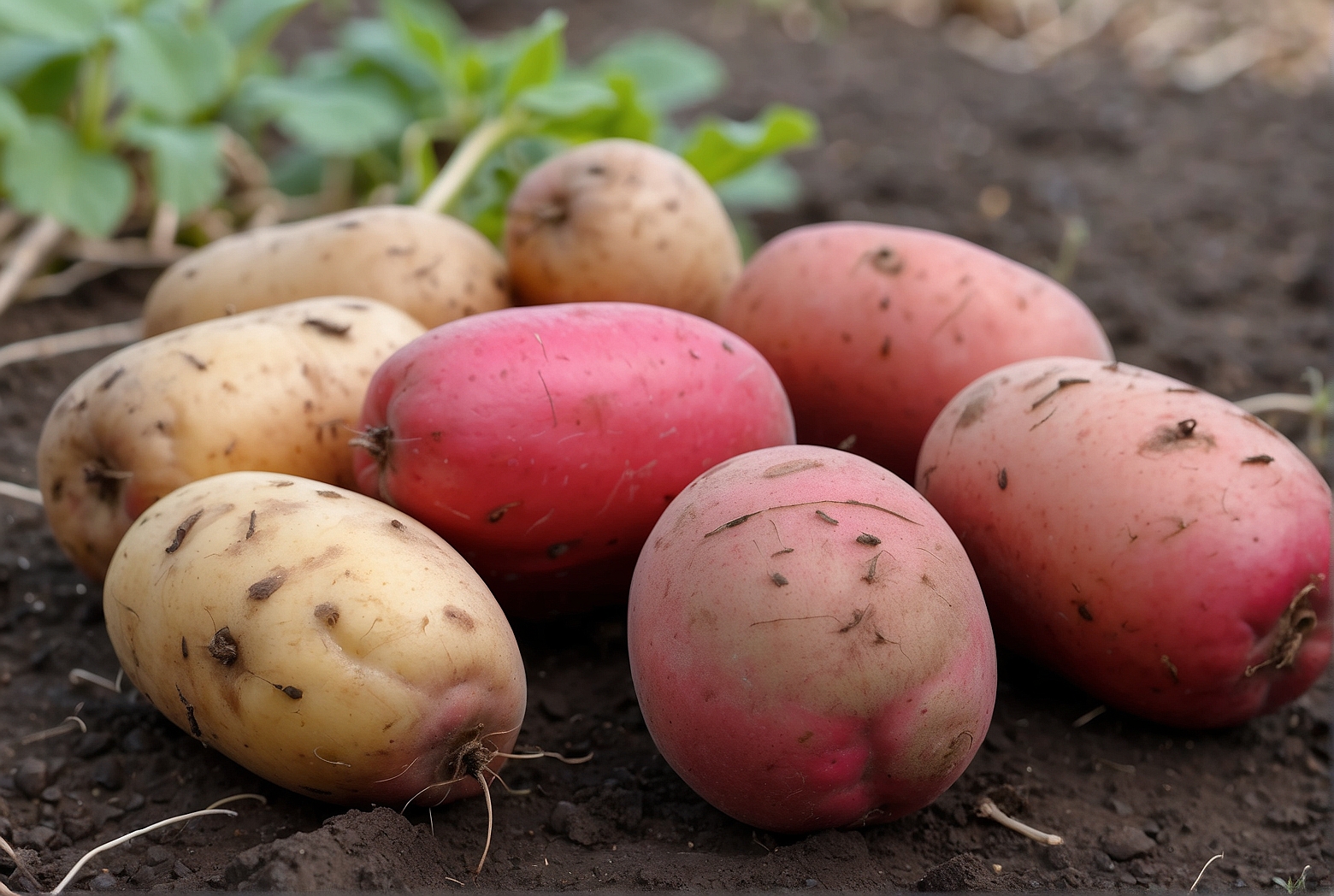Last Updated on April 7, 2024 by Tony Manhart
Are you a gardening enthusiast looking to grow your own potatoes? Well, we have some exciting news for you! In this article, we will be discussing the fascinating world of growing determinate Red Pontiac seed potatoes. Whether you’re a seasoned gardener or just starting out, this informative piece will provide you with all the essential tips and tricks to successfully cultivate these vibrant and delicious tubers in your very own backyard. So, grab your gardening gloves and get ready to embark on a fantastic potato-growing adventure!
Introduction to Red Pontiac Seed Potatoes
What are Red Pontiac Seed Potatoes?
Red Pontiac seed potatoes are a popular variety of potatoes that are known for their vibrant red skin and delicious flavor. These potatoes are considered determinate, meaning they have a specific period of growth and produce a set amount of potatoes.
Determinate vs. Indeterminate Varieties
When choosing seed potatoes, it’s important to understand the difference between determinate and indeterminate varieties. Determinate potatoes, like Red Pontiac, have a shorter growing season and produce a specific number of potatoes. Indeterminate varieties, on the other hand, have a longer growing season and will continue to produce potatoes until the plants are killed by frost. Determinate varieties are often preferred by home gardeners due to their compact size and ease of management.
Growth Characteristics of Red Pontiac
Red Pontiac seed potatoes have a compact growth habit, making them suitable for smaller garden spaces. The plants typically reach a height of around 18-24 inches and produce a good yield of medium to large-sized potatoes. These potatoes have a smooth, red skin and a creamy white flesh that is perfect for baking, boiling, or frying.

Choosing and Preparing Seed Potatoes
Selecting Quality Red Pontiac Seed Potatoes
When choosing Red Pontiac seed potatoes, it’s important to select high-quality tubers that are free from disease and damage. Look for potatoes that are firm and have healthy, unblemished skin. Avoid potatoes that are sprouted or have soft spots, as these are signs of poor quality.
Preparing and Conditioning Seed Potatoes
Before planting, it is essential to prepare and condition your Red Pontiac seed potatoes. Start by storing them in a cool, dark place for a few weeks to encourage sprouting. This process is known as “chitting” and helps the potatoes develop stronger sprouts. Additionally, you can treat the seed potatoes with a fungal or bacterial suppressant to prevent diseases during planting.
Planting Red Pontiac Seed Potatoes
Selecting the Right Planting Site
Choose a planting site for your Red Pontiac seed potatoes that receives full sun. The soil should be well-draining and fertile, with a pH level of around 5.8 to 6.5. Avoid areas prone to waterlogging, as excessive moisture can lead to rotting of the tubers.
Preparing the Soil
Prepare the soil for planting by removing any weeds or debris and loosening it with a garden fork or tiller. Incorporate organic matter, such as compost or well-rotted manure, to improve soil fertility and drainage. Rake the soil to create a smooth surface for planting.

Cutting and Preparing Seed Potatoes
If your Red Pontiac seed potatoes are large, you can cut them into smaller pieces to maximize your yield. Each piece should contain at least one eye or sprout. Allow the cut potatoes to cure for a day or two before planting, as this helps reduce the risk of rot.
Proper Spacing and Depth
Plant your Red Pontiac seed potatoes approximately 12-15 inches apart and space the rows about 24-36 inches apart. Dig a trench or furrow that is 4-6 inches deep. Place the seed potatoes in the trench with the sprouts facing up.
Planting Techniques
Cover the seed potatoes with soil, filling in the trench completely. Gently firm the soil around the potatoes to ensure good contact and prevent air pockets. Water the newly planted potatoes thoroughly to promote germination.
Caring for Red Pontiac Seed Potatoes
Irrigation and Watering Needs
Red Pontiac seed potatoes require regular irrigation to ensure healthy growth and prevent tubers from becoming stunted or malformed. Provide a consistent supply of moisture, aiming for about 1-2 inches of water per week. Avoid overwatering, as this can lead to rotting.
Fertilization and Nutrient Requirements
To promote optimal growth, it’s important to provide your Red Pontiac seed potatoes with the nutrients they need. Prior to planting, incorporate a balanced fertilizer into the soil according to package instructions. Additionally, you can side-dress the plants with a nitrogen-rich fertilizer when they begin to emerge from the ground.
Weed Control
Weed control is crucial when growing Red Pontiac seed potatoes, as weeds can compete with the plants for nutrients and moisture. Regularly remove any weeds that appear in the potato bed, taking care not to disturb the plant roots. Mulching can also help suppress weed growth.
Managing Pests and Diseases
Red Pontiac seed potatoes can be susceptible to various pests and diseases, including aphids, potato beetles, and late blight. Regularly inspect your plants for any signs of pests or diseases and take appropriate measures to control them. This may include the use of organic insecticides or fungicides, depending on the specific issue.
Supporting Plant Growth
As the Red Pontiac seed potatoes grow, it may be necessary to provide support to prevent the plants from falling over. Consider using stakes or cages to keep the plants upright. This also helps improve air circulation and reduces the risk of disease.
Hilling and Mulching
Benefits of Hilling and Mulching
Hilling and mulching are essential practices when growing Red Pontiac seed potatoes. Hilling involves mounding soil around the base of the plants as they grow, which helps encourage tuber development and prevents them from turning green. Mulching, on the other hand, helps conserve moisture, suppress weed growth, and regulate soil temperature.
Proper Hilling Techniques
Start hilling your Red Pontiac seed potatoes when the plants are about 6-8 inches tall. Use a rake or hoe to pull soil up around the base of the plants, leaving about 2-4 inches of leaves exposed. Continue to hill the plants throughout the growing season, gradually building up the hills to support the developing tubers.
Choosing the Right Mulch
When selecting a mulch for your Red Pontiac seed potatoes, opt for organic materials such as straw, leaves, or grass clippings. These materials provide excellent weed suppression, retain moisture, and gradually feed the soil as they decompose. Avoid using materials that may contain weed seeds or have been treated with herbicides.
Mulching Dos and Don’ts
Do ensure that the soil is evenly moist before applying mulch. This helps retain moisture and prevents the soil from drying out. Don’t apply too thick of a layer of mulch, as this can create a barrier that inhibits water penetration. Aim for a layer of mulch that is about 4-6 inches thick.
Monitoring and Maintenance
Monitoring Growth and Development
Regularly monitor the growth and development of your Red Pontiac seed potatoes throughout the growing season. This includes observing the overall health of the plants, checking for signs of pests or diseases, and ensuring proper tuber formation.
Staking and Tying
As the potato plants grow taller, consider staking them for additional support. Gently tie the plants to the stakes using soft twine or plant ties to prevent them from toppling over. This is especially important in areas prone to strong wind or heavy rains.
Pruning and Removing Suckers
While Red Pontiac seed potatoes do not require extensive pruning, you can remove any suckers or offshoots that may grow from the main stem. This helps direct the plant’s energy towards tuber development and promotes better air circulation.
Managing Blossom-End Rot
Blossom-end rot is a common issue that can affect Red Pontiac seed potatoes. This condition causes the bottom end of the tuber to become sunken and discolored. To prevent blossom-end rot, ensure consistent moisture levels and avoid over-fertilization. Proper calcium levels in the soil can also help mitigate this issue.
Harvesting Red Pontiac Potatoes
Signs of Harvest-Readiness
Red Pontiac potatoes are typically ready for harvest 90-120 days after planting. Look for signs such as yellowing foliage, drying vines, and loose soil around the base of the plants. Carefully dig up a few potatoes to check their size and skin texture.
Harvesting Techniques
To harvest your Red Pontiac potatoes, use a garden fork or shovel to gently lift the plants from the ground. Take care not to damage the tubers during the process. Shake off any excess soil and allow the potatoes to dry in a cool, dark place for a few hours before further handling.
Curing and Storing Potatoes
After harvesting, it’s important to cure your Red Pontiac potatoes before storing them. Lay the potatoes in a single layer in a cool, well-ventilated area for about two weeks. This allows the skins to toughen and minor injuries to heal. Once cured, store the potatoes in a dark, cool space with a temperature of around 40-50°F and moderate humidity.
Common Issues and Troubleshooting
Common Growing Problems
Growing Red Pontiac seed potatoes may come with a few common issues. These include poor tuber development, pest damage, or disease outbreaks. Regular monitoring, proper care, and prompt action can help address these problems before they worsen.
Identifying and Treating Diseases
Red Pontiac potatoes can be susceptible to diseases such as late blight, early blight, and scab. Familiarize yourself with the symptoms and signs of these diseases, and take appropriate measures to treat them. This may include applying fungicides, improving cultural practices, or removing infected plants.
Dealing with Pests
Pests like aphids, potato beetles, and wireworms can pose a threat to your Red Pontiac seed potatoes. Practice regular inspection and implement integrated pest management techniques to control these pests. This may involve the use of insecticidal soaps, beneficial insects, or physical barriers.
Addressing Nutrient Deficiencies
Nutrient deficiencies can cause stunted growth, yellowing leaves, or poor tuber formation in Red Pontiac potatoes. Conduct a soil test to determine any nutrient deficiencies and amend the soil accordingly. Foliar sprays or targeted fertilization can also help address specific nutrient needs.
Seed-Saving and Replanting
Saving Red Pontiac Seed Potatoes
Saving Red Pontiac seed potatoes for replanting allows you to maintain the desired characteristics of the variety. Choose healthy, disease-free potatoes for seed saving. Set aside a portion of your harvest and store them in a cool, dry place until planting time.
Proper Seed Storage
To ensure viability, store your Red Pontiac seed potatoes in a cool, dark place with low humidity. Maintain a temperature between 40-50°F and avoid exposure to light, which can lead to greening. Regularly check the stored potatoes for any signs of sprouting or decay.
Replanting Techniques
When replanting Red Pontiac seed potatoes, follow the same planting techniques outlined earlier in this article. Ensure that the seed potatoes have healthy sprouts and sufficient spacing to allow for optimal growth and tuber development.
Conclusion
Summary of Growing Determinate Red Pontiac Seed Potatoes
Growing Red Pontiac seed potatoes can be a rewarding experience, as these delicious tubers are known for their vibrant red color and versatile usage. By choosing quality seed potatoes, providing proper care, and addressing any issues that may arise, you can successfully grow a bountiful harvest of Red Pontiac potatoes in your own garden.
Benefits and Rewards of Growing Your Own
Growing your own Red Pontiac seed potatoes not only allows you to enjoy the freshness and flavor of homegrown produce but also provides a sense of accomplishment. You have control over the growing conditions and can choose organic methods to ensure a healthier, pesticide-free crop. Furthermore, gardening offers a rewarding and therapeutic experience that connects you with nature and promotes self-sufficiency. So why not give it a try? Start planting your Red Pontiac seed potatoes and reap the benefits of growing your own delicious potatoes.
Tony Manhart is a passionate gardener who has been tending to gardens for over 20 years. He takes pride in creating beautiful outdoor spaces with plants, trees, and shrubs that can thrive in any environment. He loves to share his knowledge with others and has taught classes on gardening basics and advanced techniques. He is committed to sustainability, using natural and organic methods to create and maintain gardens. He also works with local organizations to create green spaces for communities. When he’s not gardening, Tony enjoys hiking, reading, and spending time with his family.


